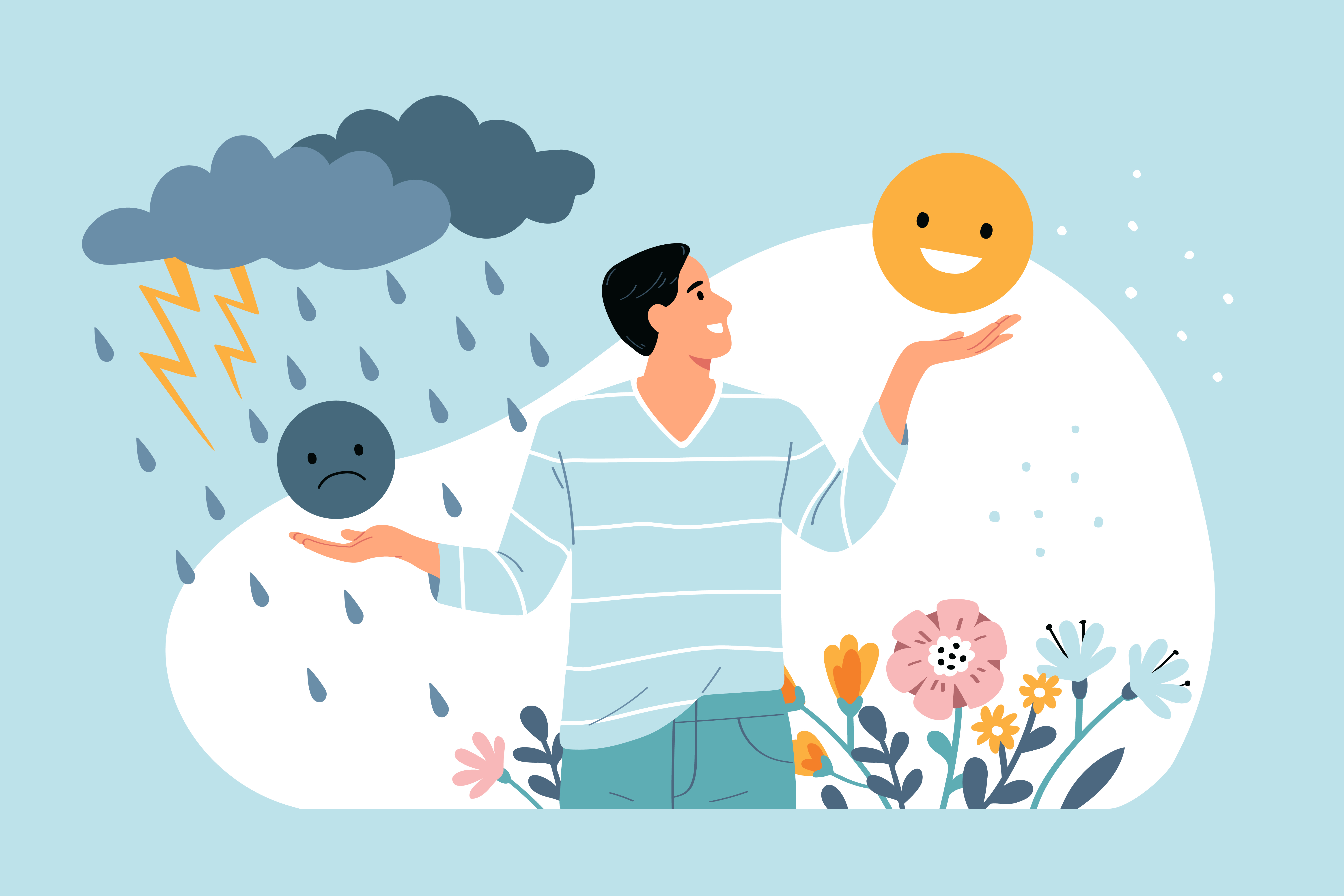Studying abroad is an exciting adventure, but for international students, adapting to new climates can be challenging, particularly when facing Seasonal Affective Disorder (SAD). Seasonal Affective Disorder (SAD) is a form of depression that occurs at specific times of the year, typically during the fall and winter months when daylight hours are shorter. This condition can have a significant impact on one's mood, energy levels, and overall well-being. In this guide, we'll explore practical strategies to help international students manage and overcome SAD, ensuring a positive and fulfilling academic experience.

Recognizing the Symptoms of SAD
According to National Institute of Health (NIH), individuals with SAD may experience a range of symptoms, including persistent sadness, lack of energy, difficulty concentrating, changes in sleep patterns, and a diminished interest in activities. Understanding these signs is crucial for early intervention.
Recognizing the symptoms of Seasonal Affective Disorder (SAD) is crucial for early intervention and effective management. Here's a guide to recognizing the symptoms of SAD:
- Persistent sadness: Prolonged periods of low mood or hopelessness.
- Engergy and sleep changes:
- Fatigue: significant decrease in energy levels.
- Sleep patterns: Disruptions, such as oversleeping or insomnia.
- Appetite and Weight Shifts:
- Changes in Appetite: Resulting in weight gain or loss.
- Carbohydrate cravings: Increased desire for carbohydrates.
- Difficulty concentrating: Struggling with decision-making and focus.
- Feelings of worthlessness: Persistent negative self-perception.
- Physical symptoms: Aches and pains unrelated to specific medical conditions.
- Seasonal consistency: Symptoms occurring at specific times, typically fall and winter.
- Impaired functioning: Significant impact on daily life, including work and relationships.
- Suicidal thoughts: In severe cases, thoughts of death or suicide may arise. If experienced, seek immediate professional help.
Recognizing these signs is vital for timely intervention and effective management of Seasonal Affective Disorder. If you or someone you know is exhibiting these symptoms, seeking professional guidance is crucial.
The Difference Between Tiredness and SAD
However, we need to differentiate between common tiredness and Seasonal Affective Disorder (SAD), which involves considering various factors, including the duration, severity, and specific symptoms. Here are some key distinctions:
|
ASPECT |
COMMON TIREDNESS |
SEASONAL AFFECTIVE DISORDER (SAD) |
|
Duration and Regularity |
Occasional, short-lived tiredness |
Prolonged symptoms over consecutive weeks or months |
|
Seasonal Patterns |
Not tied to a specific season |
Recurs predictably during specific seasons |
|
Intensity of Symptoms |
General weariness |
Profound fatigue, persistent sadness, and more |
|
Impact on Daily Functioning |
Mild impact on daily activities |
Significant impairment in work, relationships, etc. |
|
Response to Rest |
Rest and sleep usually alleviate tiredness |
Rest alone may not alleviate symptoms |
|
Additional Symptoms |
Generally lacks specific depressive symptoms |
May include depressive symptoms and changes |
|
Social and Emotional Factors |
Less likely to cause social withdrawal |
Social withdrawal, lack of interest in activities |
|
Professional Assessment |
Consultation for persistent tiredness is advisable |
Mental health professional assessment is crucial |
Effective Strategies to Manage and Overcome Seasonal Affective Disorder
International students often face unique challenges, and universities recognize the importance of providing comprehensive support services to ensure their well-being and academic success. Here are some additional support resources that can be beneficial for students: om-campus counseling services, international student services, health services, peer support programs, online forums and communities, etc.
Meanwhile, there are other approaches to consider, such as:
Light Therapy
Limited exposure to natural sunlight during the darker months is a key factor contributing to SAD. Light therapy, which involves exposure to a bright light that mimics natural sunlight, has proven to be an effective treatment. Discuss the benefits of light therapy, its mechanism, and how individuals can incorporate it into their daily routine.
Nutrition and Exercise
Emphasize the importance of maintaining a balanced diet and engaging in regular physical activity. Both nutrition and exercise play pivotal roles in regulating mood and energy levels. Provide tips on incorporating mood-boosting foods and simple, effective exercises into daily life.
Mind-Body Connection
Explore the connection between mental and physical well-being. Practices such as meditation, yoga, and deep breathing exercises can help manage stress and alleviate symptoms of SAD. Discuss how mindfulness techniques can be integrated into a daily routine.
Setting Realistic Goals
Encourage individuals with SAD to set achievable goals, both short-term and long-term. This can help build a sense of accomplishment and improve overall motivation. Breaking down larger tasks into smaller, more manageable steps is a key strategy for success.
Social Support
Highlight the importance of maintaining social connections during the winter months. Whether through virtual meet-ups or in-person activities, staying connected with friends and family can provide emotional support and combat feelings of isolation.b
Professional Help and Therapy
Stress the significance of seeking professional help if symptoms persist or worsen. Therapy, including cognitive-behavioral therapy (CBT), can be highly effective in addressing the underlying causes of SAD and developing coping strategies.
Creating a Winter Wellness Plan
Guide readers in developing a personalized winter wellness plan. This plan may include a combination of the strategies mentioned above, tailored to the individual's preferences and lifestyle.
Remember, the effectiveness of these strategies may vary from person to person. It's essential to consult with healthcare professionals for personalized guidance and support. Combining these strategies and maintaining a proactive approach can significantly contribute to managing and overcoming the challenges posed by Seasonal Affective Disorder.
Conclusion
Seasonal Affective Disorder is a challenging condition, but with the right strategies and support, individuals can manage its symptoms effectively. By incorporating light therapy, maintaining a healthy lifestyle, fostering social connections, and seeking professional help when needed, individuals can overcome the winter blues and regain control of their mental well-being. Remember, taking proactive steps to address SAD can lead to a brighter and more positive outlook, even during the darkest months of the year.
In your academic journey as an international student, financial matters should never hinder your pursuit of knowledge. Enter EzyRemit's Education Payment Service, your ultimate companion in erasing financial worries. With seamless and secure payment solutions tailored for students, EzyRemit ensures that your focus remains on your education. Say goodbye to payment hassles and hello to a worry-free learning experience with EzyRemit, your trusted partner in financial ease.







